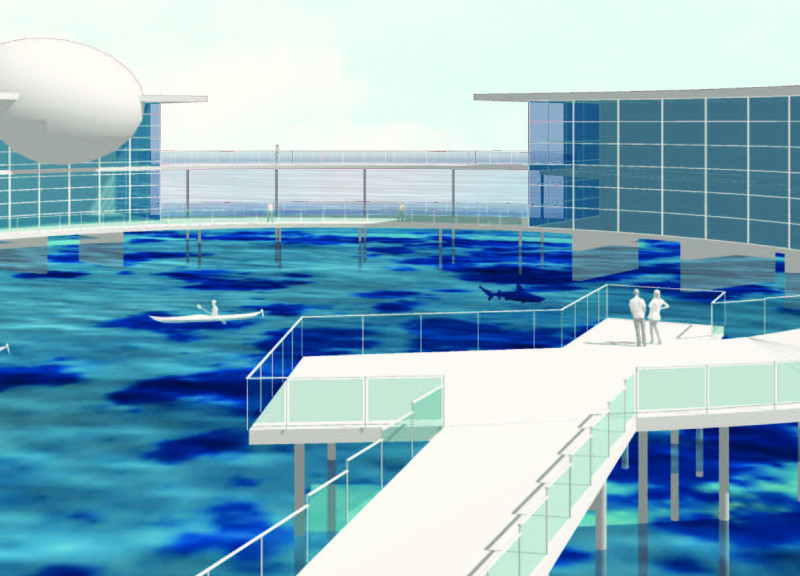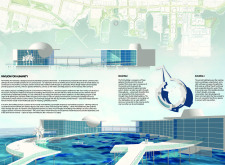5 key facts about this project
The first building of the Pavilion is dedicated to showcasing galleries that trace the evolution of human existence, utilizing a sequence of three interconnected spaces that guide the visitor through an ascending path. This gradual elevation not only offers a unique spatial experience but also symbolizes the progress of human understanding and connection with nature. The galleries emphasize transparency through large glass facades that invite natural light while providing unobstructed views of the surrounding landscape.
The second building acts as a multifunctional space, equipped with rooms for workshops, meetings, and a planetarium. These areas are designed to facilitate knowledge sharing and foster social interaction among visitors. The open layout allows for flexibility in use, making it a hub for community engagement that adapts to various events and initiatives. The emphasis on connectivity is critical, as each area encourages dialogue and collaboration among diverse groups.
One of the unique aspects of the Pavilion for Humanity is its integration of water features that serve both aesthetic and functional purposes. The presence of water not only enhances the sensory experience but also symbolizes reflections on life and community. This consideration of natural elements alongside architectural design distinguishes the Pavilion from conventional projects that often prioritize structural forms over environmental interactions.
The Pavilion’s materiality also plays a significant role in its architectural identity. The predominant use of glass provides a sense of openness, merging interior spaces with the natural surroundings. Steel and concrete contribute to the structural integrity, while sustainable materials reflect a commitment to environmental responsibility. This thoughtful selection of materials enhances the architectural narrative, aligning with the project’s goal of creating a harmonious relationship between humanity and nature.
The Pavilion for Humanity embodies architectural ideas that prioritize human connection and environmental consciousness. Its design not only serves practical functions but also promotes a deeper understanding of our interactions within the world. Visitors are encouraged to explore the architectural plans, sections, and detailed designs to gain further insights into the innovative approaches taken in this project.























